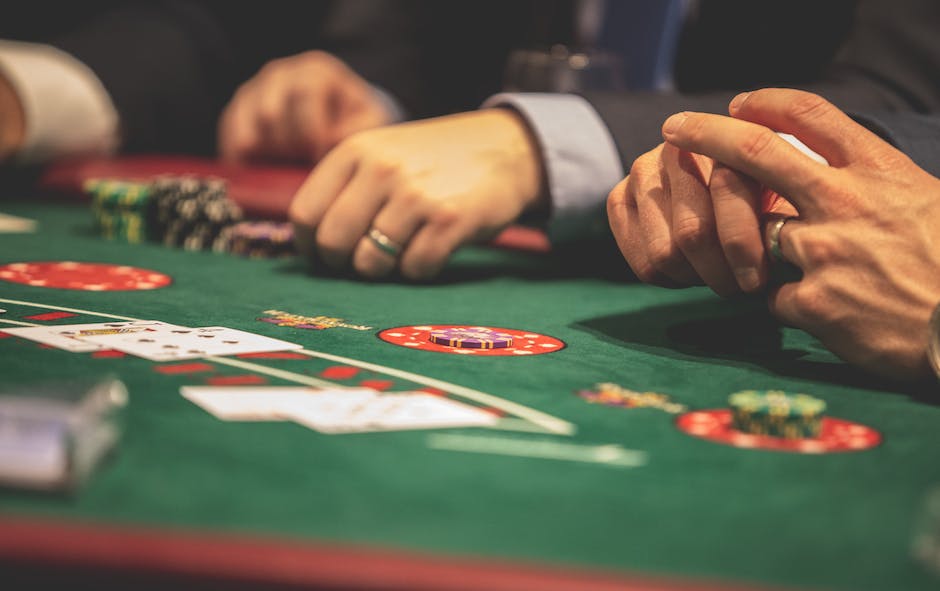Pai Gow Poker, a captivating fusion of ancient Chinese game Pai Gow and classic American poker, is a thrilling card game that involves strategy, skill, and a little luck. The game, which presents a unique blend of chance and skill, provides numerous opportunities for gamers to test their prowess and improve their playing style. This essay targets enthusiasts and hobbyists eager to immerse themselves in the world of Pai Gow Poker, starting with the basics, graduating to complex strategies, understanding the banking mechanism unique to this game, exploring its various variations and soaking up tips and tricks from the experts. We delve into the intricacies of the game, debunking the jargon, and revealing the secret strategies that make it one of the most fascinating poker variants.
Understanding Pai Gow Poker Basics
Understanding Pai Gow Poker Basics
Pai Gow Poker, also known as Double Hand Poker, is a version of Pai Gow, a Chinese game played with tiles, but adapted for play using a standard 52-card deck, plus one joker. The game originates from American casinos and has gained popularity for its unique style of play which offers numerous outcomes from each hand.
Objectives of Pai Gow Poker
The primary aim of Pai Gow Poker is to create two separate poker hands out of the seven cards that are dealt to the player. These consist of a five-card hand and a two-card hand. The five-card hand, also known as the ”Back” or “high” or “big” hand, must outrank the two-card hand, which is called the ”Front” or “low” or “small” hand. If the five-card hand does not outrank the two-card hand, it is considered a foul and the player loses.
In order to win, both of the player’s hands must beat the banker’s hands. If only one wins, it’s a push and no money is exchanged. If both of the banker’s hands beat the player’s, the player loses their bet.
Table Setup and Dealing of Cards
Pai Gow Poker can accommodate up to six players and one dealer. The game begins with each player placing their bet. Afterwards, all players at the table, including the dealer, are dealt seven cards. The goal is to split these seven cards into two viable poker hands.
Handling of Cards
Once the seven cards are dealt, players examine their cards and are responsible for setting their two hands in appropriate spots on the table. The two-card hand can only be a pair or high card. In contrast, the five card hand follows standard poker hand rankings with one exception: in most casinos, A-2-3-4-5 is the second-highest type of straight or straight flush, ranking above 2-3-4-5-6 but below K-Q-J-10-9.
Role and Value of Joker
Pai Gow Poker incorporates a joker card. However, contrary to how the joker is used in some other poker games, in Pai Gow Poker, the joker acts as a wild card only to complete a flush, straight, straight flush, or a royal flush. If not, it functions as an Ace.
Card Rankings of Pai Gow Poker
Pai Gow Poker follows the standard poker hand rankings for the five-card hand, with pair, two pair, three of a kind, straight, flush, full house, four of a kind, straight flush and royal flush. It’s essential to remember that the five-card hand must be the higher hand.
For the two-card hand, possibilities are quite limited. The best hand is a pair of aces, and the lowest is a hand with 3-2. It’s also worth noting that individual card rankings follow this order from the highest to the lowest: Ace, King, Queen, Jack, 10, 9, 8, 7, 6, 5, 4, 3, and 2. There are also different rules that apply to certain combinations of cards, and understanding these quirks can certainly improve one’s performance in the game.
Before embarking on the journey to master Pai Gow Poker, one must first acquire a solid understanding of its basis. With regular gameplay and tactical refinement, one can enhance their expertise in the game, thereby raising the probability of scoring victories.

Pai Gow Poker Strategy
Grasping Pai Gow Poker Approach: Betting and Hand Placement
Pai Gow Poker is a game deeply rooted in tactical decision-making where players can lay the groundwork for firm strategies. Two fundamental elements seal the cornerstone of a basic Pai Gow Poker approach: betting and arranging hands.
The initial move in Pai Gow Poker is betting. Most variations of the game present players with two core betting possibilities: the principal bet and the bonus bet. The player places the initial bet against the dealer’s seven-card hand. On the contrary, the bonus bet (frequently referred to as the ‘fortune bet’) is a gamble on the quality of the player’s hand, with the dealer’s cards being of no consequence.
Positioning hands acts as another key strategy in the game of Pai Gow Poker. Post the initial deal, players need to categorize their seven cards into two distinct poker hands: a two-card hand (front hand) and a five-card hand (back hand). The back hand is required to be of the same value as or exceed the front hand.
Implementing Complex Strategies: The House Way
As one gains experience and becomes more comfortable with the game, they can start exploring more complex Pai Gow Poker strategies, such as using the house way.
The house way is a set of rules that the dealer follows when setting their hands in Pai Gow Poker. Using the house way can offer guidance as you get more familiar with the game. By understanding how the dealer will set their hands, you can anticipate their moves and adjust your strategy accordingly.
The house way rules can vary from casino to casino. Common practices include splitting pairs unless they hold a pair of sixes, keeping flushes or straights together in the back hand, and splitting two pair unless one pair is a pair of aces.
Mastering Pai Gow Poker: A Guide to Advanced Tactics
If you want to become adept at playing Pai Gow Poker, it’s necessary to adapt and evolve your strategies based on various factors. These can include the hands you’re dealt, the house rules at the casino you’re playing at, and the cards the dealer reveals.
For example, understanding when to split the cards, knowing how to set hands when you have a joker, and recognizing the opportune moment to place a bonus bet can greatly enhance your gameplay. By mastering these advanced tactics, you’re equipping yourself to make informed decisions and, consequently, increasing your chances at success.
However, as with many forms of gaming, luck plays a pivotal role in Pai Gow Poker. Despite having solid strategies, the outcome isn’t always guaranteed. Therefore, one should approach Pai Gow Poker not just as a money-making opportunity, but also as a source of entertainment and enjoyment.

Banking in Pai Gow Poker
Diving Deeper: The Role of Banking in Pai Gow Poker
Renowned for being an American game with distinct influences of traditional poker and a Chinese domino game called Pai Gow, Pai Gow Poker captivates players with its unique ‘banking’ mechanic. The banking feature allows players to ‘bank’ their bets, adding another layer to the game dynamics and paving the way for more strategic moves.
Understanding the Banking Rules in Pai Gow Poker
In a typical game of Pai Gow Poker, players compete against the banker; usually this is the casino dealer. However, the game offers an option for players to assume the role of the banker. The opportunity to bank rotates around the table, allowing each participant a chance to serve as the bank.
It’s important to note that not all casinos follow the same rules for banking. In some establishments, a player-banker must have enough chips to cover all the other players’ bets. Others allow for co-banking, wherein the player and dealer share the bank.
Utilizing Strategies for Banking in Pai Gow Poker
Strategic thinking becomes more complex when taking on the role of the banker in Pai Gow Poker. When you’re the banker, the house will collect a 5% commission on any wins. However, the main advantage of being the banker is that you’re playing against multiple opponents simultaneously with the chance of winning all of their bets, which can lead to substantial winnings.
Choosing when to bank can also be a significant part of your strategy. If you notice that many players are low on chips or seem to be playing conservatively, it may be a good time to assume the role of the banker. Conversely, if players are betting big and playing aggressively, you may want to avoid banking during that round.
Benefits of Banking in Pai Gow Poker
The primary benefit of banking in Pai Gow Poker is the increased odds of winning. The banker wins any ‘copy’ hands (hands of the same value), giving them an additional advantage. It’s estimated that the banker has roughly a 1-2% edge over the other players due to this rule.
Additionally, banking can add a new layer of excitement to the game and elevate a player’s involvement. This role rotation can make the game more engaging and keep everyone at the table on their toes.
Every enthusiast or hobbyist centered on understanding Pai Gow Poker must be aware that comprehension and strategic use of the banking feature can dramatically improve your gaming experience and potentially increase your earnings. It’s a tactical asset that, when utilized correctly, can provide a significant edge over other gamers. The excitement that comes with the role of a banker can make this classic game a thrilling roller-coaster ride for all enthusiastic card game lovers.

Pai Gow Poker Variations and their strategies
Exploring Variations of Pai Gow Poker
As a blend of traditional Chinese Pai Gow and American Poker, Pai Gow Poker has emerged as a favorite casino card game, inspiring myriad variations over the years. Each variant upholds unique rules imbued with diverse strategic opportunities, empowering players with the freedom to select a style that matches their gaming approach impeccably.
Traditional Pai Gow Poker
The original version of Pai Gow Poker sees players receiving seven cards, which they must divide into a five-card hand (also known as the “back” hand) and a two-card hand (the “front” hand). The objective is to create stronger hands than those of the dealer. Players should remember that the back hand must always rank higher than the front hand. Also, a vital strategy in this variant involves balancing your hands to improve overall odds.
Fortune Pai Gow Poker
In the Fortune Pai Gow Poker variation, additional betting options exist, including a side bet on the seven cards making a poker hand. This means even if a player loses the two Pai Gow hands to the dealer, they can still win with their side bet. From a strategic perspective, the side bets in Fortune Pai Gow Poker bear considerable risk, but they also offer high potential rewards.
Emperor’s Challenge Pai Gow Poker
In Emperor’s Challenge Pai Gow Poker, players can place a side bet on creating a Pai Gow – a hand with no pairs or any straight or flush. This rule twists the traditional Pai Gow Poker strategy. Instead of seeking to make high-ranked poker hands, the strategy revolves around creating the lowest possible hand.
Progressive Pai Gow Poker
Progressive Pai Gow Poker involves an additional progressive bet. Players can win this bet by creating a seven-card straight flush, even if they lose the primary bet against the dealer. The potential windfall can be massive, often reaching into the thousands or tens of thousands of dollars. This variation adds an extra layer of strategic complexity, as players need to consider whether or not to risk on the progressive bet.
EZ Pai Gow Poker
In EZ Pai Gow Poker, there is no 5% commission on winning hands, which is normally a commonplace feature in traditional Pai Gow Poker. In return, when the dealer has a queen high Pai Gow, all player’s bets push. Despite the alterations, the essential strategy for this variant remains the same: create balanced hands to increase your success rate.
Diversity lies at the heart of Pai Gow Poker games, each variant distinguished by unique rules and strategic nuances. A thorough understanding of these rules is crucial to effectively employ the most appropriate strategies. Whether it’s the straightforward traditional Pai Gow Poker or the exhilarating Progressive version, there is a Pai Gow Poker variant suited to your individual playstyle.

Expert Tips and Tricks for Pai Gow Poker
Mastering Pai Gow Poker: Refining Your Skills with Advanced Strategies.
Pai Gow Poker, a fascinating fusion of the ancient Chinese game of Pai Gow and the classic American poker, requires an in-depth appreciation of its intricate design for successful play. Insights from professional Pai Gow Poker players can serve as invaluable guides, assisting in enhancing your gameplay, honing your skills and increasing your win rates.
Acknowledge the Role of the Banker
In Pai Gow Poker, you could play as the banker. And the banker has an advantage. The rules vary from one casino to another; however, in most situations, when the player and the banker have hands of equal value, the banker wins. Therefore, whenever you have an opportunity to be the banker, seize it.
Setting Your Hands Correctly
One of the key strategies you should employ when playing Pai Gow Poker is setting your hands correctly. You need to arrange your seven cards into two hands: a two-card hand and a five-card hand. The five-card hand must always rank higher than the two-card hand. If both of your hands beat the dealer’s, you win. On the contrary, if they both lose, you will lose your bet. Therefore, it is crucial to understand how to set these hands best possible way to give a winning advantage.
Minimize the House Edge
To optimize your chances of winning, you need to minimize the house edge. In Pai Gow Poker, the house edge is relatively low compared to other casino games, around 2.8%. However, you can further reduce this edge by splitting your hands, employing the House Way strategy, and banking whenever possible.
Practice Makes Perfect
As the adage goes, practice makes perfect. Each hand you play in Pai Gow Poker is a chance to bolster your skills. The advent of online gaming platforms gives you the opportunity to play Pai Gow Poker from anywhere and takes you through various scenarios to test your strategies. Besides, there are free demos available where you can practice your gameplay and improve your Pai Gow Poker strategy without risking any real money.
Manage Your Bankroll Wisely
Regardless of your skill level, bankroll management is crucial. It’s advisable to set a budget for your games and stick to it, irrespective of whether you are winning or losing. Knowing when to walk away keeps you in the game longer and helps preserve your winnings.
While the game of Pai Gow Poker may seem complex at first glance, it becomes easier once you understand its nuances. By following expert tips and practicing your strategies, you can master this game, outsmart the competition, and potentially reap significant rewards.

Mastering Pai Gow Poker is more than just understanding the fundamentals; it’s about delving deep into the strategies, exploring variations, and learning from the mavens of the game. It might seem complex initially, but with dedicated practice and meticulous study of its strategies, one can significantly improve their game. This information-rich guide provides a complete understanding of the game, ensuring players are well-equipped to sit at the Pai Gow Poker table confidently. Embrace these strategies, explore banking, dive into various variations, and absorb expert advice to turn your fascination for Pai Gow Poker into a foray of successful gaming. Here’s to your journey to becoming a skilled Pai Gow Poker player!